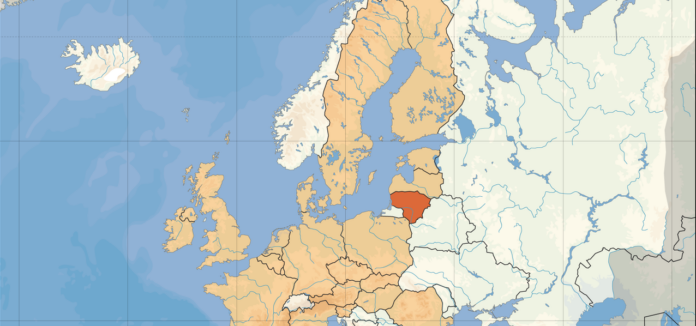
Few people enjoy dwelling on sad events or their anniversaries. However in the bigger scheme of things, if we take an interest in our country, we celebrate its victories, for example, Canada Day, here, where we live now, or Independence Day for our country of origin – Lithuania. So should we take note of historically significant dates, such as Remembrance Day.
January is a meaningful month for Lithuania. On January 13 (Sausio 13-oji) we remember the takeover attempt in Vilnius by Soviet troops. They stormed the TV tower, cutting of all communication, and actually crushed 11 demonstrators with their tanks. If you have been to the Seimas (Parliament) in Vilnius, you know it’s difficult to imagine this peaceful square crammed with people, barricades and barbed wire to protect the buildings where Vytautas Landsbergis, president of this newly “free” republic stood his ground. The events of that horrible night were devastating and unforgettable, as you may know from friends and relatives who traveled from all over Lithuania to add their voices to the prayers and songs of hope and patriotism that rang throughout Vilnius the night of January 13th. Ask them about it, and talk to your children about the price of freedom.
A lesser-known commemoration for Lithuanians is officially January 28, although the events took place over the course of two weeks of that month in 1923. The history of Klaipeda Territory (Klaipėdos kraštas) is quite complex, even vague to most Lithuanian Saturday School graduates. After World War I, in 1919, the Peace Treaty of Versailles took away from the Germans the port city of Klaipeda (Memel in German) and an adjacent area of 2,848 square kilometres, designated as the Klaipeda Territory. The Encyclopedia Lituanica tells us that this Territory was carved out of a larger area of East Prussia, known as Prussian Lithuania, or Lithuania Minor (Mažoji Lietuva).

At the Peace Conference in 1919 the Allies did not yet recognize Lithuania as an independent state and stipulated that the Territory be transferred from Germany to the jurisdiction of the Allied Powers until the status of Lithuania was fully established as an independent state. From 1920-1923 the Territory remained under Allied rule (Great Britain, France, Russia and Italy), specifically under the French, who sent a chief administrator and a small military contingent to implement the stipulation.
With the French showing little inclination to transfer the territory to Lithuania Fearing a transfer of the Territory to Poland in collusion with France, the leaders of Lithuania Minor realized an insurrection was the only means to avoid this. It took place in January of 1923, led by the Lithuanian Riflemen’s Union (Šaulių sąjunga). The French troops in the territory rendered but token resistance and were soon withdrawn. Germany remained neutral. On February 16, 1923, the Conference of Ambassadors agreed to relinquish the title over the Territory to Lithuania, provided that a law was passed safeguarding the rights of the German inhabitants and guaranteeing the establishment of an autonomous democratic government in the Territory. There was much friction between pro-Germans and Lithuanian authorities, to the point that natives of the Territory, regardless of their ethnic background, were labeled as traitors of Germany if they took a pro-Lithuanian position, and retaliation was threatened. In 1938 the Nazis won the local elections, and in 1939 Hitler issued an ultimatum to Lithuania demanding the cession of the Territory to Germany. After the collapse of Nazi Germany, the geographic area was incorporated into Soviet Lithuania.
Another place name that may cause confusion to students and adults alike is Konigsberg, which was at one time the capital of East Prussia (Lithuania Minor). Founded in 1255-1258 by the Teutonic Knights, it has a deep and interesting history with multifaceted ties to Lithuania. The first Lithuanian book, Martynas Mažvydas’ Katekizmas and other books were published in Konigsberg. Descendants of the Lithuanian Protestants that lived there survive in the diaspora today, many belonging to the Lithuanian Lutheran denomination with their own parishes and with their leader, the Lutheran bishop of Lithuania.
In 1945 the Potsdam Conference assigned the city of Konigsberg (Karaliaučius in Lithuanian) together with the northern part of East Prussia to the Union of Soviet Socialist Republics. The name of the city was changed to Kaliningrad. During World War II, Konigsberg had been severely damaged by the British Royal Air Force and the Soviet Army, many inhabitants killed, while others died in the famine of 1945-47. Many who remained were exiled to Russia or sent to West Germany, and the area was colonized by Russians and Belorussians to take their place. There is still a segment of the population that is ethnically Lithuanian. RSJ






























